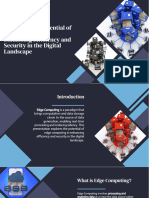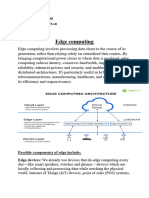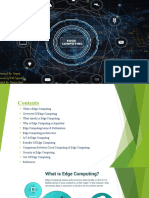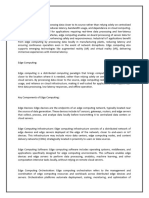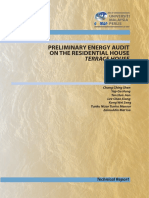0% found this document useful (0 votes)
48 views4 pagesW3, Introduction To Edge Computing
Edge Computing is a distributed computing model that processes data at or near its source, offering benefits such as reduced latency, bandwidth optimization, and enhanced security. It consists of edge devices, edge nodes, and cloud integration, and is applied in areas like smart cities, healthcare, and industrial IoT. Despite challenges like security risks and interoperability issues, the future of Edge Computing looks promising with growth in IoT devices and integration with AI.
Uploaded by
Abhishek Kumar SinghCopyright
© © All Rights Reserved
We take content rights seriously. If you suspect this is your content, claim it here.
Available Formats
Download as PDF, TXT or read online on Scribd
0% found this document useful (0 votes)
48 views4 pagesW3, Introduction To Edge Computing
Edge Computing is a distributed computing model that processes data at or near its source, offering benefits such as reduced latency, bandwidth optimization, and enhanced security. It consists of edge devices, edge nodes, and cloud integration, and is applied in areas like smart cities, healthcare, and industrial IoT. Despite challenges like security risks and interoperability issues, the future of Edge Computing looks promising with growth in IoT devices and integration with AI.
Uploaded by
Abhishek Kumar SinghCopyright
© © All Rights Reserved
We take content rights seriously. If you suspect this is your content, claim it here.
Available Formats
Download as PDF, TXT or read online on Scribd
/ 4






























